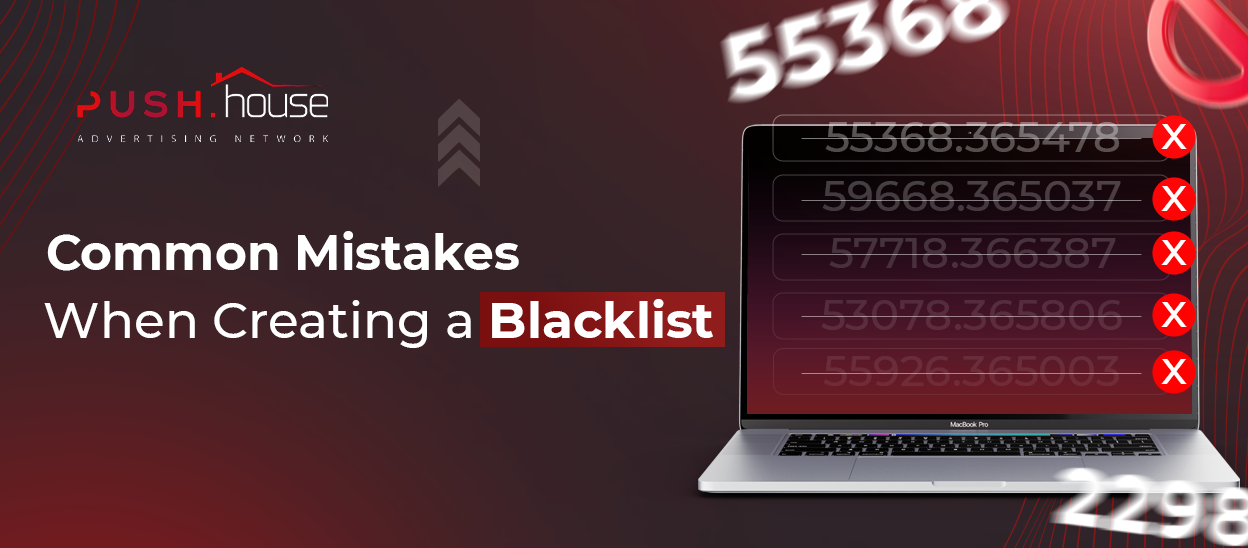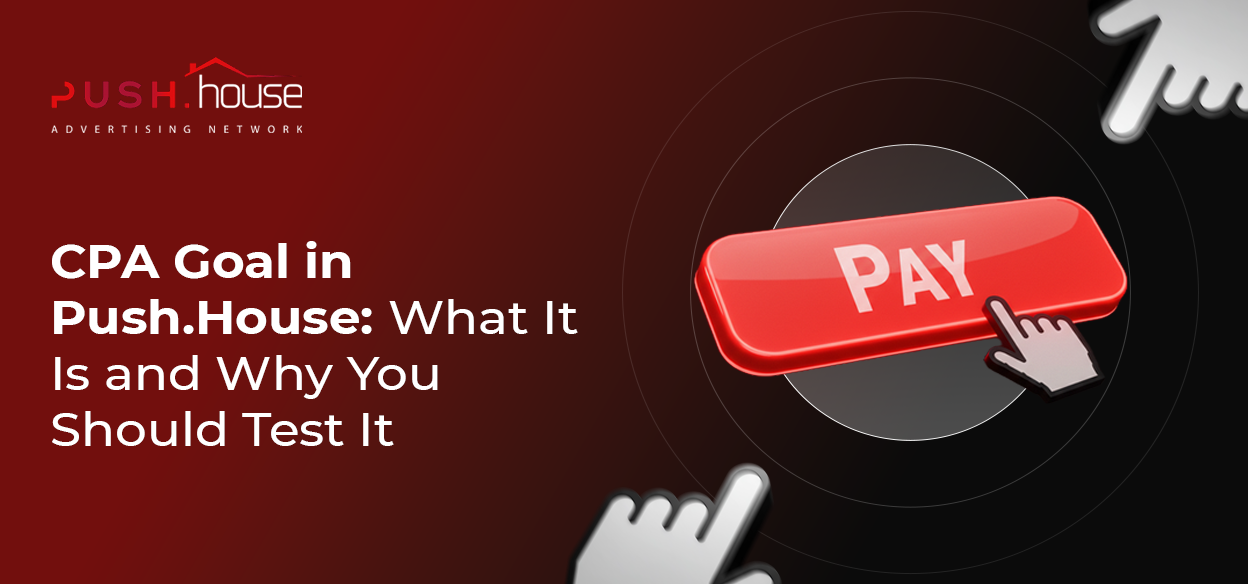
Common Mistakes When Creating a Blacklist
Hi there! Push.House here.
The success of your ad campaign often depends on how well you manage your blacklist—a list of websites where showing your ads is undesirable. Poorly built blacklists can lead to wasted budgets, missed target audiences, and a drop in overall performance. In this article, we’ll break down the most common mistakes advertisers make when compiling blacklists and how to avoid them.
1. Blacklist too broad or too narrow
The problem:
- An overly broad blacklist blocks not only underperforming websites but also those with potential.
- On the other hand, a list that’s too narrow lets low-quality traffic slip through.
How to avoid it:
- Keep a close eye on your traffic reports. Exclude sources that show clearly below-average performance—and review regularly.
- A blacklist shouldn’t be a one-time setup; update it as new data comes in.
2. Ignoring sources categories
The problem:
Many advertisers manually block specific sources without considering their overall category. As a result, new sources from the same low-quality category can still slip through.
How to avoid it:
Track the categories of underperforming sources and monitor for new entries from similar verticals. Adjust your list accordingly.
3. No segmentation by device or ad format
The problem:
A one-size-fits-all blacklist across all devices and formats can hurt performance. What doesn’t work on desktop might perform well on mobile—and vice versa.
How to avoid it:
- Split your campaigns by device and ad format.
- Then, tailor separate blacklists for each segment.
4. Blindly copying other people’s blacklists
The problem:
In an effort to speed up optimization, some advertisers rely on shared or public blacklists. But traffic performance varies depending on the offer, region, and audience—and what works (or doesn’t) for one may be irrelevant for another.
How to avoid it:
- Always test external sources based on your own data.
- If you choose to import a list, do it gradually and monitor the metrics closely.
5. No automation or monitoring system
The problem:
Manually maintaining a blacklist is time-consuming and prone to human error. Low-quality placements can go unnoticed.
How to avoid it:
- Use automated rules and real-time performance monitoring.
- Set up your system to automatically blacklist sources based on key metrics like high CPA or low ROI.
6. Ignoring WinRate when analyzing placements
Why WinRate matters:
WinRate shows how often your ad wins the auction and gets displayed. It’s a crucial metric for blacklist decisions. It helps you:
- Assess bidding effectiveness. A low WinRate may just mean your bid is too low to gather enough impressions for a fair judgment.
- Avoid wrong exclusions. A source may appear underwhelming simply due to limited reach. But that could be a bidding issue—not traffic quality.
- Manage your budget smarter. Understanding where and why you lose auctions helps you adjust your strategy—whether by increasing bids or excluding poor performers.
How to use WinRate in Push.House:
Go to the “Network Volume” section or campaign bid settings to view recommended bids by region.
Want to increase WinRate? Raise your bid for a specific GEO or source.
Use microbidding to adjust your traffic:
- Increase bids for high-CR, high-ROI sources
- Lower bids (instead of blacklisting) for sources that convert but at a high cost
- Expand your reach while keeping your budget under control
How to enable microbidding:
Go to “Campaign List,” select your campaign, and adjust bids per source manually or via a template.
Conclusion
A well-built blacklist isn’t just a collection of “bad sources.” It’s an essential part of your daily optimization toolkit. Avoid impulsive decisions. Monitor your metrics—especially WinRate. Use microbidding. Do that, and your Push.House campaign will not only stay efficient, but profitable too.














